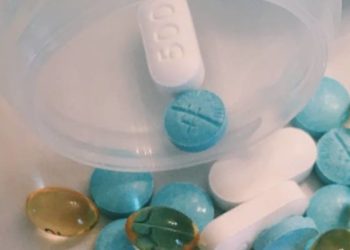Provision of HHIV preexposure prophylaxis among adolescents increased from 2018 to 2021
1. The provision of HIV preexposure prophylaxis increased from 2018 to 2021 in the United States, with the greatest increases seen in older adolescents 18 to 19 years of age and the most prescriptions given to males 18 to 19 years of age.
2. Pediatricians accounted for nearly a third of providers of HIV preexposure prophylaxis among American adolescents.
Evidence Rating Level: 2 (Good)
Study Rundown: Approximately 20% of all new HIV diagnoses in the United States are made in youth from 13 to 24 years of age. HIV preexposure prophylaxis (PrEP) safely and effectively reduces the risk of HIV infection, and is recommended by the Centers for Disease Control and Prevention and the American Academy of Pediatrics for adolescents and adults at increased risk. That said, adolescents face unique barriers to care and had limited access to PrEP before 2018. Given scarcity of data on PrEP prescribing in adolescents, this study sought to characterize trends in PrEP provision among American adolescents from 2018 to 2021. The study team identified youth 13 to 19 years of age in the IQVIA Real World Data – Longitudinal Prescriptions database who were prescribed oral PrEP from 2018 to 2021. They found a 76.2% increase in the number of adolescents who were prescribed PrEP during the study period. The greatest increase was within the 18 to 19 years group. Additionally, males, and those living in urban areas received the most PrEP prescriptions in 2021. Physicians accounted for 53.7% of PrEP providers for adolescents in 2021, with 29.6% of them being pediatricians, and 71.5% of these pediatricians being general pediatricians. This study contributes to our understanding of the trends in PrEP provision among adolescents in the United States and highlights the importance of pediatricians in ensuring access to PrEP among youth. Future work should be directed at identifying and limiting barriers to PrEP provision.
Click to read the study in Pediatrics
Relevant Reading: Toward greater pre-exposure prophylaxis equity: increasing provision and uptake for Black and Hispanic/Latino individuals in the U.S.
In-Depth [retrospective cohort]: This study evaluated the trends in PrEP provision among adolescents and young adults across the United States from 2018 to 2021. The study team used a validated algorithm to identify adolescents 13 to 19 years of age in the IQVIA Real World Data – Longitudinal Prescriptions database who were prescribed oral PrEP during the study period. Demographic information and prescriber’s national provider identifier were also available and used to extrapolate the provider’s type and specialty. Chi-squared tests were performed to determine the associations between the youth’s demographic characteristics by sex and age groups, and between physician specialty and patient age group. The number of adolescents prescribed PrEP increased by over 70% with an estimated annual percentage change of 18.0% [95% CI: 16.6-19.5]. Increases were seen in both males and females, in all age groups from 13 to 19 years of age, and in all geographic regions across the United States. Adolescent males accounted for a substantial proportion of PrEP prescriptions. Among the physicians prescribing PrEP to adolescents, nearly 30% were pediatricians, mostly general pediatricians. Younger adolescents were more likely to be prescribed PrEP by a pediatrician than older adolescents.
Image: PD
©2023 2 Minute Medicine, Inc. All rights reserved. No works may be reproduced without expressed written consent from 2 Minute Medicine, Inc. Inquire about licensing here. No article should be construed as medical advice and is not intended as such by the authors or by 2 Minute Medicine, Inc.







